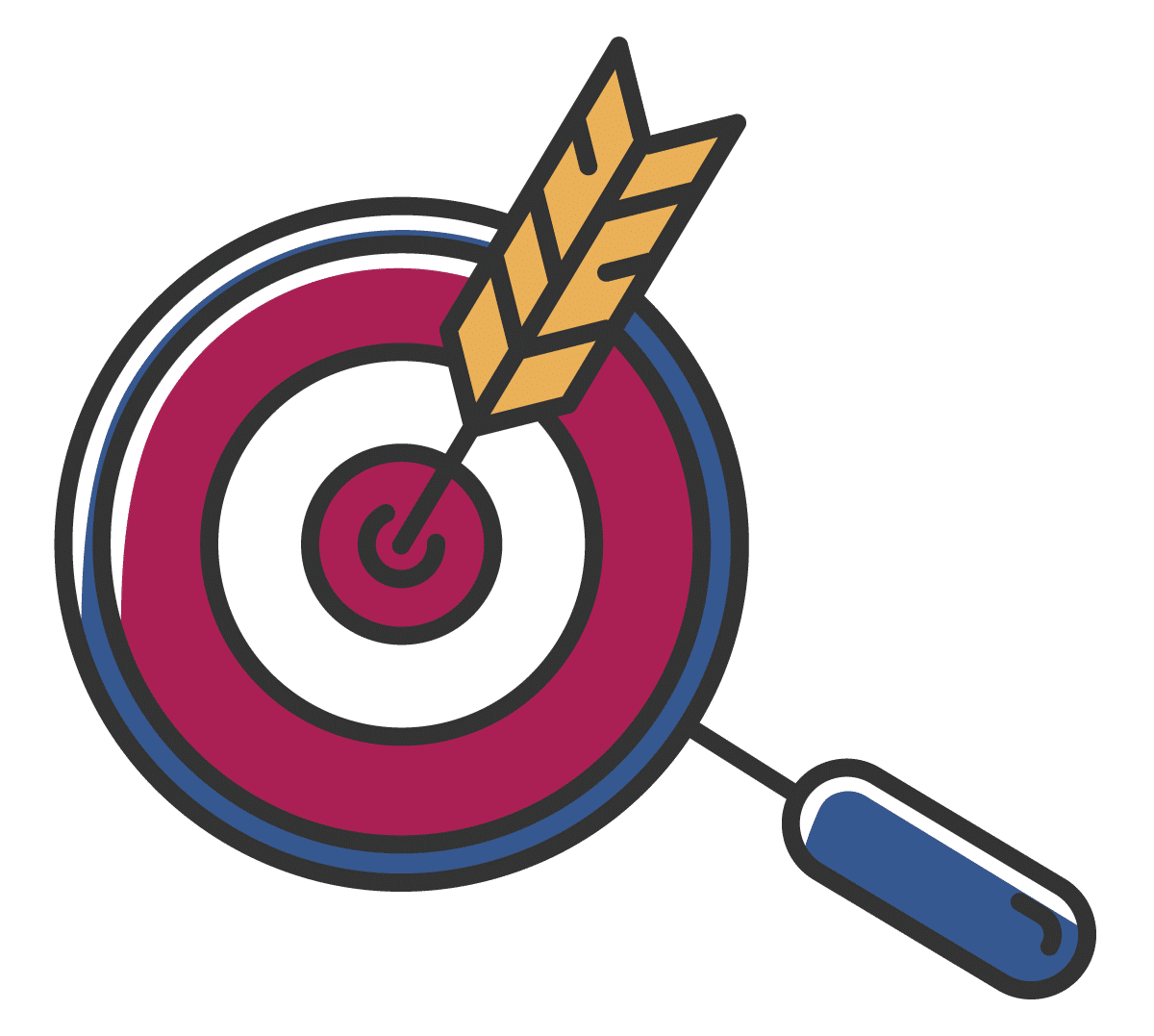Here’s the truth: while marketing can be pretty sophisticated stuff (it’s applied neuro-psychology for goodness’ sake), it’s usually made to be a lot more complicated than it actually is.
So let’s put an end to that.
This blog is going to show you what has to be done, how to do it, and even give you a simple prescription for 6 marketing actions you can take immediately.
If you’re a member of the Legacy Advisor Growth Network, you can also attend our Marketing Masterclass and we’ll walk you through it directly.
The Underlying Forces of Marketing
There are three underlying forces that drive all successful marketing. If you handle these, everything starts to work the way they should.
1. Niche Market
 If there was a single piece of marketing advice we could give an advisor that would amp up the growth of their business – and this doesn’t matter if you’re just starting or you have a booming business – it would be to focus on a niche.
If there was a single piece of marketing advice we could give an advisor that would amp up the growth of their business – and this doesn’t matter if you’re just starting or you have a booming business – it would be to focus on a niche.
A niche is a specific market group that has shared demographic and psychographic characteristics. What that really means is that they share both visible, and invisible characteristics. Visible ones might be things like a profession, the kind of car they drive, the kinds of organizations they belong to – things you can observe. Invisible characteristics are things like what they’re thinking about, worrying about, dealing with, aspiring toward – things you can’t directly observe.
A niche has shared needs and they tend to be found in similar places. Sometimes a niche is not obvious, but there is invariably a thread that connects them and once you find it, you are much more able to connect with them, understand them, and serve them.
Here’s a key element of a niche, however: It has to be findable.
If you’re not able to somehow pull together a list of names based on niche characteristics, it’s not a niche, it’s a hope. If your niche is business people that value your opinion, it doesn’t count because it’s not findable. We want you to have those clients, and your client should value your opinion, but you can’t go find a list of business people that value your opinion and start reaching out to them.
What’s the purpose of focusing on a niche? Simple. It lets you create results faster.
When you’re known in a group of people as “the person” to talk to, it becomes easier to get introductions, you’re able to demonstrate expertise faster, you’re able to show your care and understanding more directly – it simple grows faster.
So ultimately, a niche is a specific, unique and findable group of people where you have an affinity beyond rapport and create great results, faster.
Get clear on your niche, either by reviewing your book of business and seeing what pattern might exist there, or do some direct testing with groups of potential clients and see who starts to resonate with you and your message.
2. Personal Brand
 When you start talking about brands, it can be tempting to get into conversations about Apple and Amazon and Coke and Nike and potential impact of brand equity on a valuation of your business. But we’re not going to do any of that – mostly because it doesn’t matter to most advisors. They’re great intellectual conversations, but they rarely matter in real life.
When you start talking about brands, it can be tempting to get into conversations about Apple and Amazon and Coke and Nike and potential impact of brand equity on a valuation of your business. But we’re not going to do any of that – mostly because it doesn’t matter to most advisors. They’re great intellectual conversations, but they rarely matter in real life.
A brand is a promise. It sets up an expectation of what it’s going to be like to be around you.
Are you graceful, intellectual, thoughtful, rebellious, a teacher, a trouble-maker – do you cuss, are you always proper, are you formal, are you driven by process, are you tidy, are you an organizational mess, are you funny, are you serious? What is it like being around you?
Now, why does it matter? Who cares? Well, here are a few things to know…
First, the brain, specifically the subconscious, is looking for certain things and one of the things it wants is certainty. It wants to know what to expect and then, when that happens, it feels good, it feels reassured. So if you’re very thoughtful and patient with people, and then one day you’re not, people are asking themselves, what’s going on with him – he’s never like that.
At the same time, if you are impatient all the time and reactive, and one day you’re not – people will also be questioning what’s going on there. It’s not that one is good or bad – they’re just expectations. But when you violate the expectation, the brain gets defensive – and now it’s harder to connect with people.
Here’s what’s interesting – let’s say you’re a bit of a rebel. You’re likely to have clients that really resonate with that. We worked with an advisor who is a total rebel and confrontative and willing to argue and guess what his niche is like? They’re the same, and it’s a great match.
A brand is a promise. It’s one you make and keep in every interaction and it helps set the tone for how you’ll market to people.
Who cares? Your clients do, but they don’t know it until you change the promise. Your future clients do, because the promise of how you’ll be is something that will resonate with them. And you should, because it helps accelerate your marketing and also helps you make better decisions with how to market. We’ll get into that later.
3. The Message
 What is the one thing you need to have your niche hear, that when they hear it, they’ll stop what they’re doing and think, that was insightful, or that was for me. What is that one thing?
What is the one thing you need to have your niche hear, that when they hear it, they’ll stop what they’re doing and think, that was insightful, or that was for me. What is that one thing?
I know you have lots you can help them with, but what is it?
As an example, at Legacy, we help financial advisors grow their business.
But advisors don’t have to grow their business like everyone else. You can grow it your way, and get the results YOU want, no one else’s goals, just yours. And that resonates with our clients, or they wouldn’t be with us.
What resonates with YOUR clients. What’s the one message you’re going to share with them.
When you are clear on your Niche, your Brand, and your Message, then you can build a marketing plan.
Building the Immediate Marketing Plan
Marketing is anything you do that helps get the right people to move closer to you. That means your Marketing Plan has a single purpose: Generate Niche Leads.
That’s it. Not general awareness. Not create positive sentiment in the community. Not a dozen things. One thing: Generate Niche Leads
That’s why knowing your niche is so important and why we started with Niche. Without it, you cannot build a meaningful marketing plan, or the business you want.
The purpose of generating niche leads is so that you can hit your production goals. Your production is the result of how many Approach Talks you have with potential clients.
It is to provide the niche leads for your Production Plan.
So these pieces all fit together.
We get the right people moving closer to you.
So that you have niche leads.
So that you can have more successful Approach Talks and meet your Production goals faster and easier, or allow you to increase those production goals without increasing the work.
The Heart of the Matter
So we’ve come to the heart of the matter – building a marketing plan you can use right now. Not in a month, or next quarter. Right. Now.
Here’s the thinking that goes into it.
First, you need 5-6 marketing activities on the go at any given time. Some will be passive, and the more should be active. The marketing channels need to be selected based on your niche.
Question One: Where are the fish?
If your niche market are all avid users of social media, then you need to go over to the social media pond and start doing some fishing.
If your niche doesn’t use social media, then you shouldn’t either.
If you say, I don’t know if they use social media, then we’ll invite you to re-think your niche. That’s something you should know.
If you say, I don’t think they use it for work, but they might personally, then that means they use social media and you should be there.
Then think through, where else are they? Are they in not-for-profits? Religious groups? Sports teams? At business clubs? Golf courses? Tennis clubs? Jeep rallies? Book clubs? Volunteer fire stations? At universities? Taking online courses? Where are they?
If you can’t answer these questions, you need to learn more about your niche. Find out, and then only market where your niche is.
Question Two: What is the message?
What is the one thing you need to have them hear, that when they hear it, they’ll stop what they’re doing and think, that was insightful, or that was for me. What is that one thing?
I know you have lots you can help them with, but what is it?
Question Three: What is the one action you want them to take?
The brain likes commands – but only one at a time. So all your marketing should have one message, and one action you ask the them to take. This is active marketing so you’re looking to have them move toward you in a meaningful way.
Now, asking for a meeting every time might be a bit over the top, but asking them to download something, to take a call, to attend a webinar, to read and article – these are reasonable actions to ask for, and will help generate niche leads.
Question Four: How will you deliver the message?
How will you get it to them? Will it be a letter? Will it be a webinar? Will it be a social event? Will it be an email? A social post? A blog? A podcast? A book you send them? A book you write? An Introduction from someone else?
How will you deliver your message?
When you think about how you deliver it, or the marketing channel you’re going to use, you need to consider two things: Will that method get to your niche? And second – is it consistent with your brand promise.
If you are very formal and professional and cultured, it’s probably not consistent with your brand to stage a cage match of MMA fights for your clients – it’s off brand.
But renting an art gallery might be, or a museum.
The channel has to be consistent with them, AND with you.
It still leaves you thinking, Ok, but what should I do? Chris, you told me that this would be an immediate marketing plan – it’s not feeling like that.
Well no worries, because I want to give you 6 things you can do immediately. You’ll need to tune each of them to your niche, and your brand – but those are HOW issues and just requiring some adjusting to work in most cases.
To get you started here are the 6 channels to pursue:
- Social Events
- Seminars/webinars/live casts
- Direct mail – both lumpy mail and sales letters
- Google alerts strategy
- Website with search engine optimization
- Social profiles
Six Successful Marketing Channels
Here are six immediate marketing channels that we’ve seen used successfully, over and over. These aren’t the only things you can do or should do – there are hundreds of things you can do. But here are six that seem to work repeatedly.
First Channel – Social Events
When you host social events of some kind – smaller gatherings with a simple theme – people get a chance to see how you behave with others. They get to see if they like you. You get a chance to say a few words – and they get to hear what you say. You can run all kinds of social events – from barbeques to exotic outings of some kind – but they should be big enough to allow for people to mingle, and small enough that you can spend a little time with everyone.
This is an Active Marketing channel so you should be ending the event knowing there are some people you’ll be able to talk with further. Your list should expand because of the event.
Second Channel – Seminars – Webinars and Live Casts
These can be really time efficient. You’re able to cast a wide net if you want a large group, because email invites to 10 people take about as much time as invites to 10,000, and it doesn’t diminish the experience when there are more people on a digital call. If it’s a live event, large events can create a lot of energy and generate some critical mass – but even if they are small, the goal should be to teach.
Now, you don’t have to be the teacher. Bring in an outside expert that would be a good draw that is speaking about something that matters to your niche. It doesn’t have to be about planning or insurance or investments or living benefits. It could be about family dynamics, or cybersecurity, or any number of topics that are linked to your work, but not directly related to it.
Ensure you have an action for people to take. What’s the next step after the event?
If you are going to follow up with phone calls, tell them you’re going to do it and why you’re going to do it – make and keep small promises and build your niche list so you generate active leads.
Also, follow ups for anything you invite people to, should always handle 3 groups – follow ups to those that attended, follow ups to those who said they’d attend but didn’t, and follow ups to those that didn’t respond at all.
Sometimes people are overloaded when they got your invite, but have some space later when you follow up. Don’t miss out on this because these are your people, this is your niche you’re talking to.
Third Channel – Direct Mail
Send mail to people. Direct mail works. It’s a multi-billion dollar business for a reason and frankly, people don’t get a lot of skilful mail any more. And when they get packages, they’re interested.
There are 2 kinds of direct mail to use – Lumpy Mail and Sales Letters
Lumpy mail means mail where you’re sending something to someone. It might be a set of the Legacy Values Cards, or a book, or publication or something you know that your niche will value. The big plus about lumpy mail is that people open it, and books especially have a high perceived value so I encourage you to think about what would be good for your niche to be reading.
Make sure that whatever you send connects to your message somehow. Don’t be salesy about it, but do make sure that a quick note says you’ll be following up with them. It creates some permission through reciprocity.
With respect to sales letters, don’t underestimate them. They used to be very popular, then they got overdone, but there is still room for a good sales letter.
How long should they be? Wrong question. There is no set length for a sales letter. The issue is whether or not people will read it. We’ve written 6 page sales letters that niche leads have read – because we were speaking to what they’re actually thinking about. If you send just one paragraph that’s not speaking to your niche, there’s a good chance people won’t even finish it. But if you’re dialed in on their world, their concerns, their aspirations, wants and desires, they’ll read it.
It takes a lot to craft a good sales letter, but I encourage you to send them as part of your marketing campaign. They work. They create an opportunity to follow up. And they’ve become uncommon again.
Fourth Channel – Google Alerts
This is a passive channel – so it’s not generating niche leads – but is a way for you to keep your list warm and help them know you are thinking about them. Here’s how it works:
Through some of your interactions with people – whether on a call, webinar, in-person conversation or email exchange – as you become aware of things that are interesting to that person – a hobby, a business interest, a life concern, whatever it might be – head to google.com/alerts and create an alert.
Here’s how:
- Go to http://www.google.com/alerts
- Type in the search query you want to monitor.
- Choose what type of results you want to follow (everything, news, blogs, video, discussions, or books).
- Choose how often you want to receive updates (as-it-happens, once a day, or once a week).
- Choose if you want “Only the best results” or “All results.”
- Choose the email address you want your alerts sent to, or create a feed.
- Click “Create Alert.”
Google will then scan the web constantly for that search term and when it finds something, it will send you a link about it. If it’s something you think will be useful to your niche or to your prospect, just forward the link with a simple email that says,
“Hi [firstname]. I saw this and thought of you. All the best, [your name]” and make sure you include the link.
What happens because of that? You become the person who cares about the person, not the sale. You become the person who is thinking about your niche constantly, without having to do all the thinking.
This is highly under-utilized and as a result, creates a great opportunity for you to be a start with your clients, even before they are clients.
Fifth Channel – Your Website
Your website should be a confirmation of your validity as a great resource to your niche. Keep it niche specific and here are a few things to have in mind:
- Smiling, happy faces. You want to have happy people that are preferably you and your team if you have one. Stay away from stock photography of people – use yourselves. When people see people smiling, mirror neurons in the brain fire off and they’re more prone to smiling too. They also get to see who you are – that’s what they’re looking for.
- Don’t have deep navigation. Try and keep the key info on the main page so that people can scroll through easily, especially with the progression to mobile browsing where clicking on links is tougher.
- Use 2nd person language. Start sentences with the word “You”. You have decisions to make. You need a good team. You want someone with some expertise backing you up. You’ve had some success. You have a family to worry about. And so on. Starting with “you” makes it about them. Interestingly, they don’t want to know about you, they want to know that you know about them.
- Have a download. Create something that will be useful to your niche – make it really niche specific – so that the only people that will download it will be your niche. A .pdf that has something really useful to them is the key here.
- SEO – search engine optimization matters. People search. Now, the key is what do you want to be found for. Ideally, you want to know what your niche is looking for and then tune the language and design of your site so that the search engines prioritize you for that. It takes some work, but knowing your niche makes this a lot easier 🙂
Build a website that matters to your niche and start to see some different results come from it.
Sixth Channel – Social Profiles
Social Media as its own world is too big to handle for this space, but social profiles are something you need to handle. You need to be findable and your social profiles need to be specific.
When you create a profile on LinkedIn, Facebook, Instagram or otherwise, there are a few simple keys that you just have to have.
First, your photo needs to be clear. Your face should be visible, and the look should be consistent with your brand. If you’re friendly and approachable, don’t be looking all serious and vice versa.
Second, put your name the way you use your name. My name is Christopher, but I use Chris, so my social profiles say Chris.
Third, for your title, use your Bridge TalkTM (Legacy’s replacement to the evil elevator pitch). Have your name, and then “I help” or “we help” and then name your niche and the problem you solve for them.
When you create a Company Page on a social platform, follow the same approach as the website in terms of its design.
And then work to keep it full of content that matters to your niche. If people comment on posts you make, comment back – your goal is always to move to an offline interaction. The goal of social platforms is to create enough interaction that people will become open to meet with you.
Acting On Your Plan
Your marketing plan doesn’t matter nearly as much as acting on your marketing plan. Marketing plans can get sophisticated and frankly, downright brilliant. But a simple plan that’s well-executed is far better than a genius master plan that no one executes.
Take action on your immediate marketing plan.



